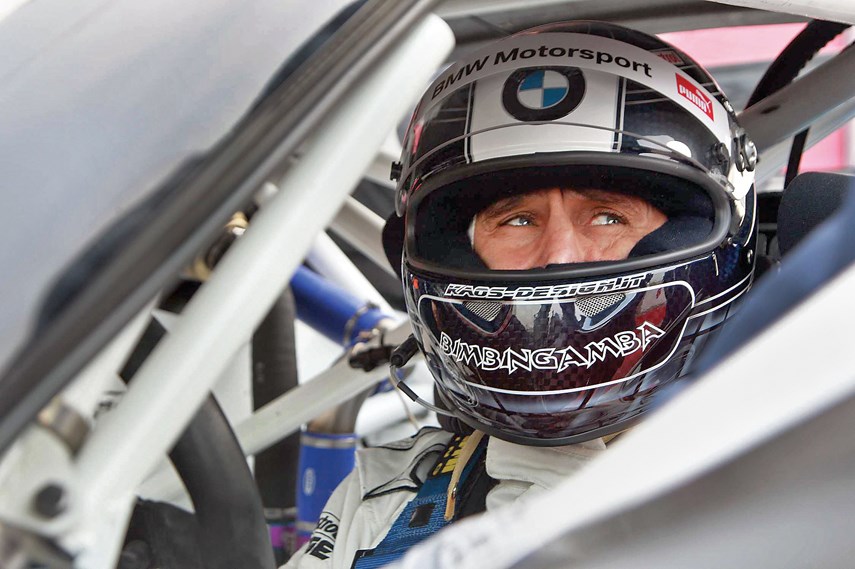A few months ago, I was walking my kids to the local park when I spotted a BMW 540i Touring. “Touring” is BMW-speak for wagon, and I love wagons in general. We could use a few more of them on the market.
Anyway, this particular one was clearly enthusiast-owned, with a set of aftermarket Hartge wheels and some kind of lowering kit. Intrigued, I peered through the window to see if it was a manual. (I am forever doing this when I see a cool car, and someday it’s going to get me arrested because it looks like I’m casing the joint before breaking in.)
Not only was the car in question not equipped with a manual transmission, but it also didn’t even have pedals. Instead, this V-8-powered sport-wagon had been fitted with hand controls, such as someone in a wheelchair would use to drive.
I’ve long been fascinated with cars as an extension of human ability. They let us travel faster and farther than we could on foot, climb mountains, cross deserts, span time zones. When you get on a plane and fly somewhere, you’re a passenger. When you drive to a place, you’re in control. And yes, some of that travel is on boring, crowded highways. However, if you decided to take the Duffey Lake Road north and not stop until you reached Bella Coola, you’d be at the controls of your own adventure.
Whoever the owner of this BMW was, they clearly weren’t a disabled person in the way we often use the term. Possibly they weren’t able to walk, but they could still go for miles. And in style too, at the helm of some proper V-8 rumble.
The reason this encounter sprang to mind this week is that this Saturday and Sunday is the annual running of the 24 Hours of Daytona. A day-long endurance event akin to Le Mans, Daytona will see some of the world’s greatest drivers going head to head in a brutally long sprint race. This year, one of those drivers will be Alex Zanardi, possibly the most inspiring racing driver of all time.
Now look, I realize most of the audience here is probably not deeply invested in motorsport, and probably doesn’t know much about the CART series from the mid-1990s. Don’t worry: you don’t need to know anything about the technical demands of open-wheel racing, or the various ins and outs of Indycar development, or even why The Zanardi Line is the most famous pass in racing, and is now highly illegal.
What you need to know is that in 2001, Alex Zanardi was involved in a horrific racing crash that resulted in the loss of both legs. It was a devastating blow, coming just a couple years after back-to-back championships, and should have meant retirement, and the end of his career.
The thing is, certain human beings refuse to be defined by their physical abilities. I can think of countless examples, from Stephen Hawking to Terry Fox, where a strength of will has overcome what others would see as a handicap. We are not defined by what we can lift, or how far we can run, our dexterity, our vision, our hearing. The destiny of a human being is writ in their spirit, and so it is with Alex Zanardi.
After his crash, Zanardi designed his own prosthetic legs. In 2003, he got back behind the wheel and completed a ceremonial 13 laps to “finish” that last race. But it wasn’t his last race.
In 2004, he returned to touring car racing. In 2005, he won a world touring car race, and celebrated by doing doughnuts on the finish line.
In 2007, he took up Paralympic handcycling, beginning with the New York City marathon. In 2012, he won a Paralympic gold medal. In 2014, he completed an Ironman event. In September of last year, he shattered the amputee world record at an Ironman event, finishing in eight hours and 26 minutes in Italy. He came fifth overall, beating more than 1,000 able-bodied people. The former record holder he beat? Some guy named Alex Zanardi.
It’s an incredible life, but perhaps not a surprising one. Becoming a racing driver requires incredible dedication and persistence, assuming you’ve not got wads of cash up your sleeve. Zanardi was the son of a plumber in Northern Italy, yet rose to the ranks of F1. That didn’t happen by accident.
And we can see this drive elsewhere. Billy Monger, a teenage British racing driver, also suffered a crash that took his legs in 2017. In 2018, he was back behind the wheel in Formula 3, getting a podium finish at the beginning of the year.
There’s a lot of talk these days about how self-driving cars are going to make life easier for people who suffer with disabilities. We hear how autonomous pods are going to make it easier for the elderly or infirm to get around, how technology-driven mobility is going to open up the world for people.
That’s probably true, at some point in the future, and a worthy goal. People need to get around, no matter their situation.
Me? Well, Sunday morning is going to find me glued to my screen, watching one of motorsport’s greatest heroes take the checkered flag. Rarely a passenger. Always a driver. A champion transcending his limitations.
Brendan McAleer is a freelance writer and automotive enthusiast. If you have a suggestion for a column, or would be interested in having your car club featured, please contact him at [email protected]. Follow Brendan on Twitter: @brendan_mcaleer.



